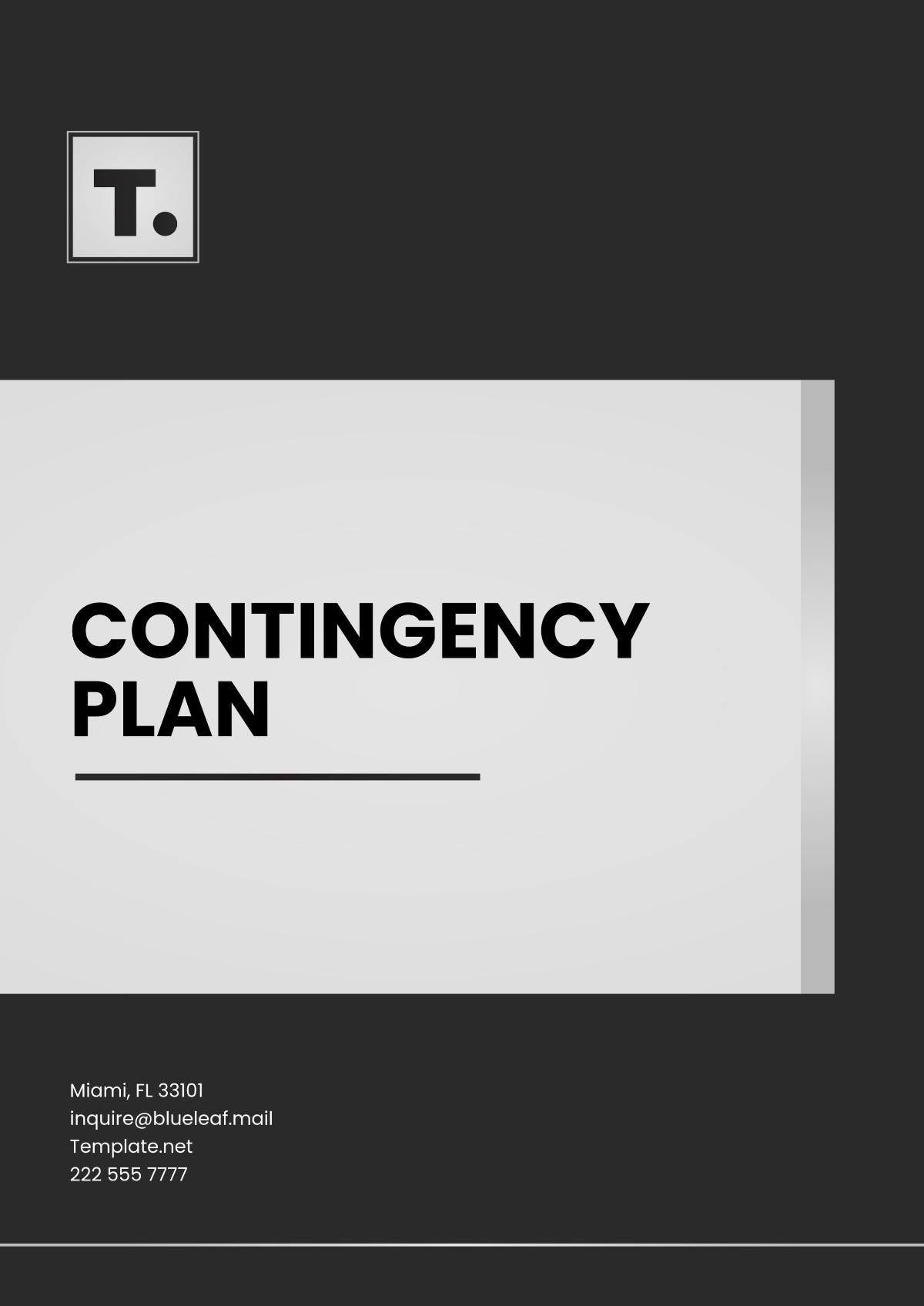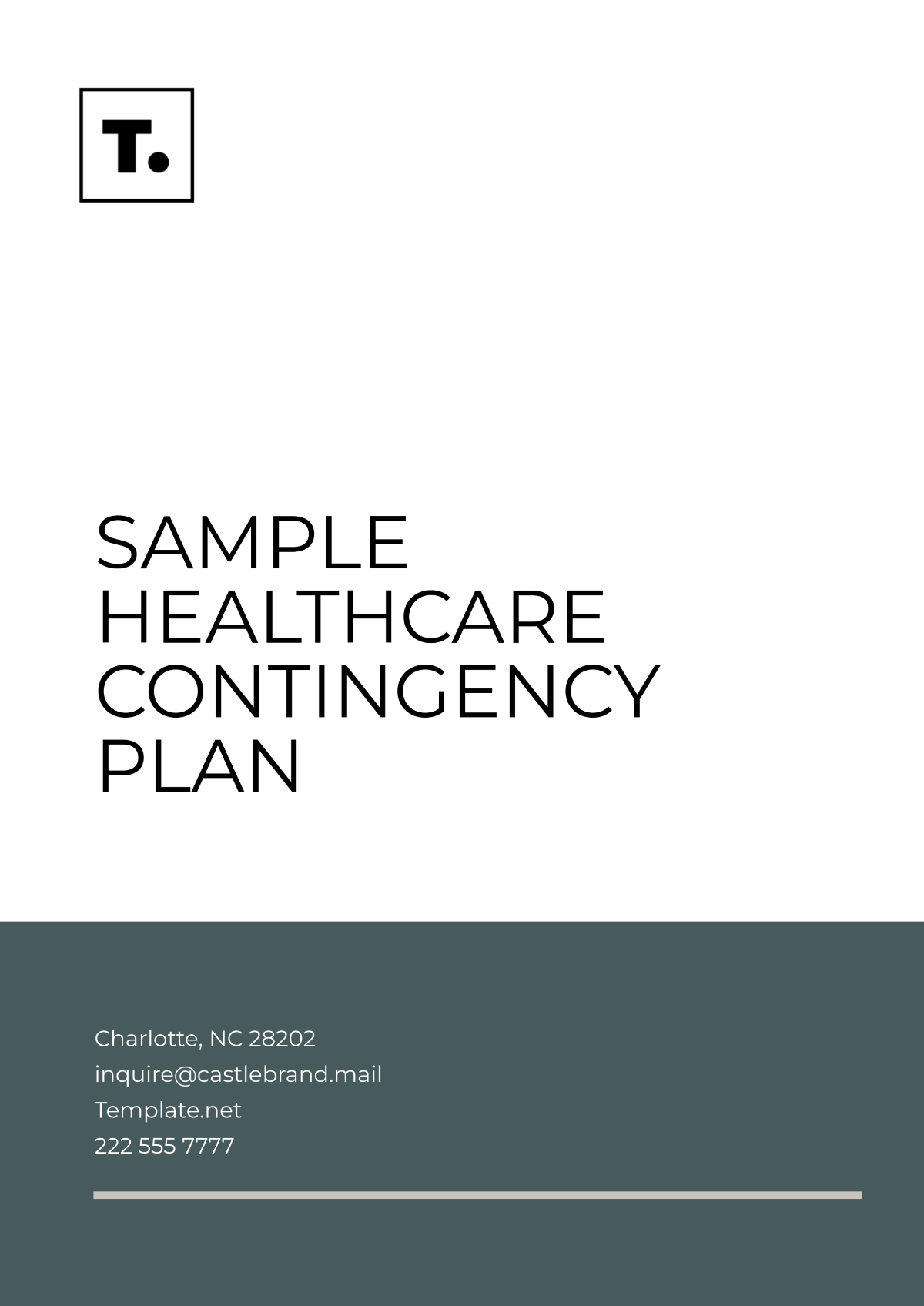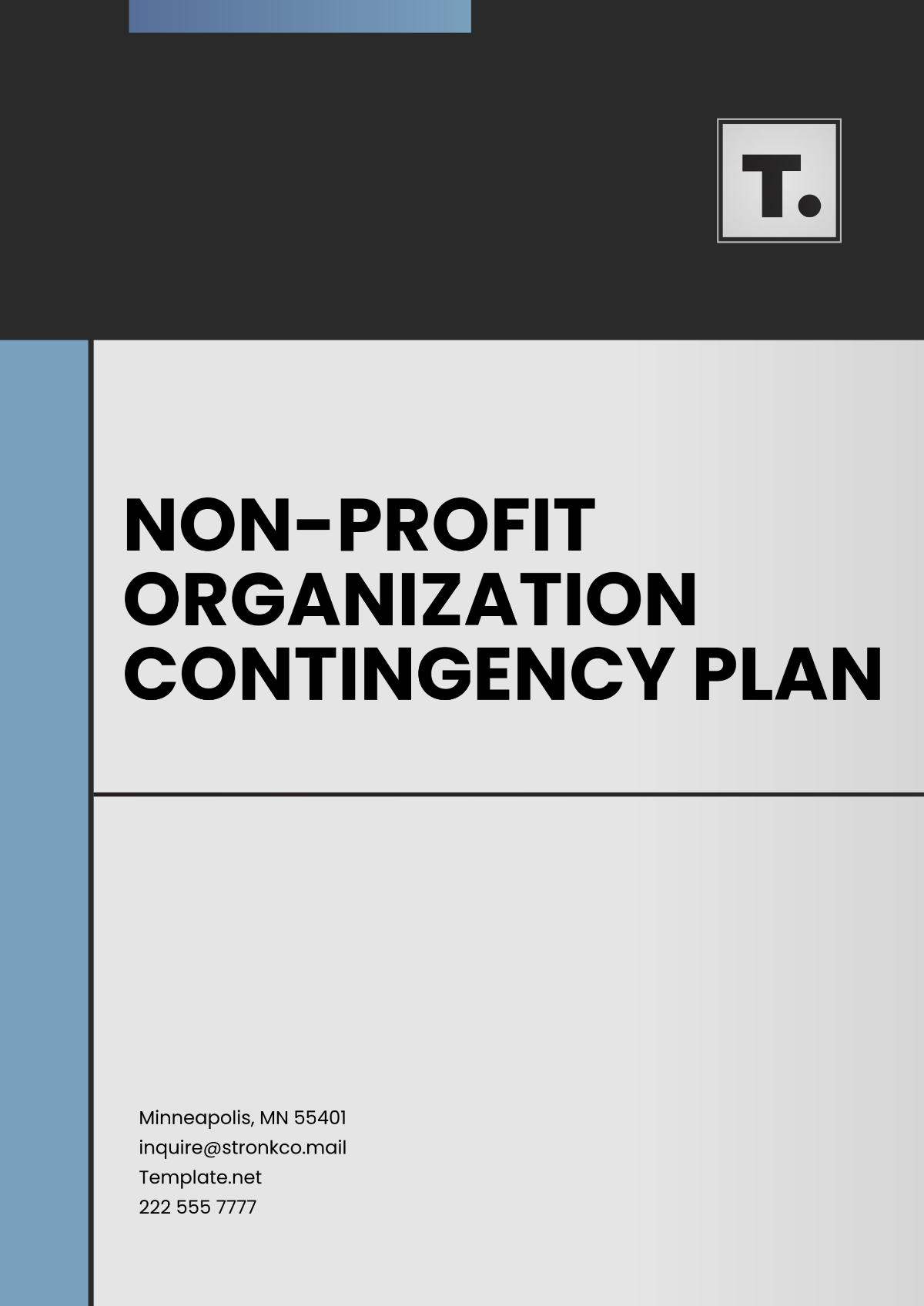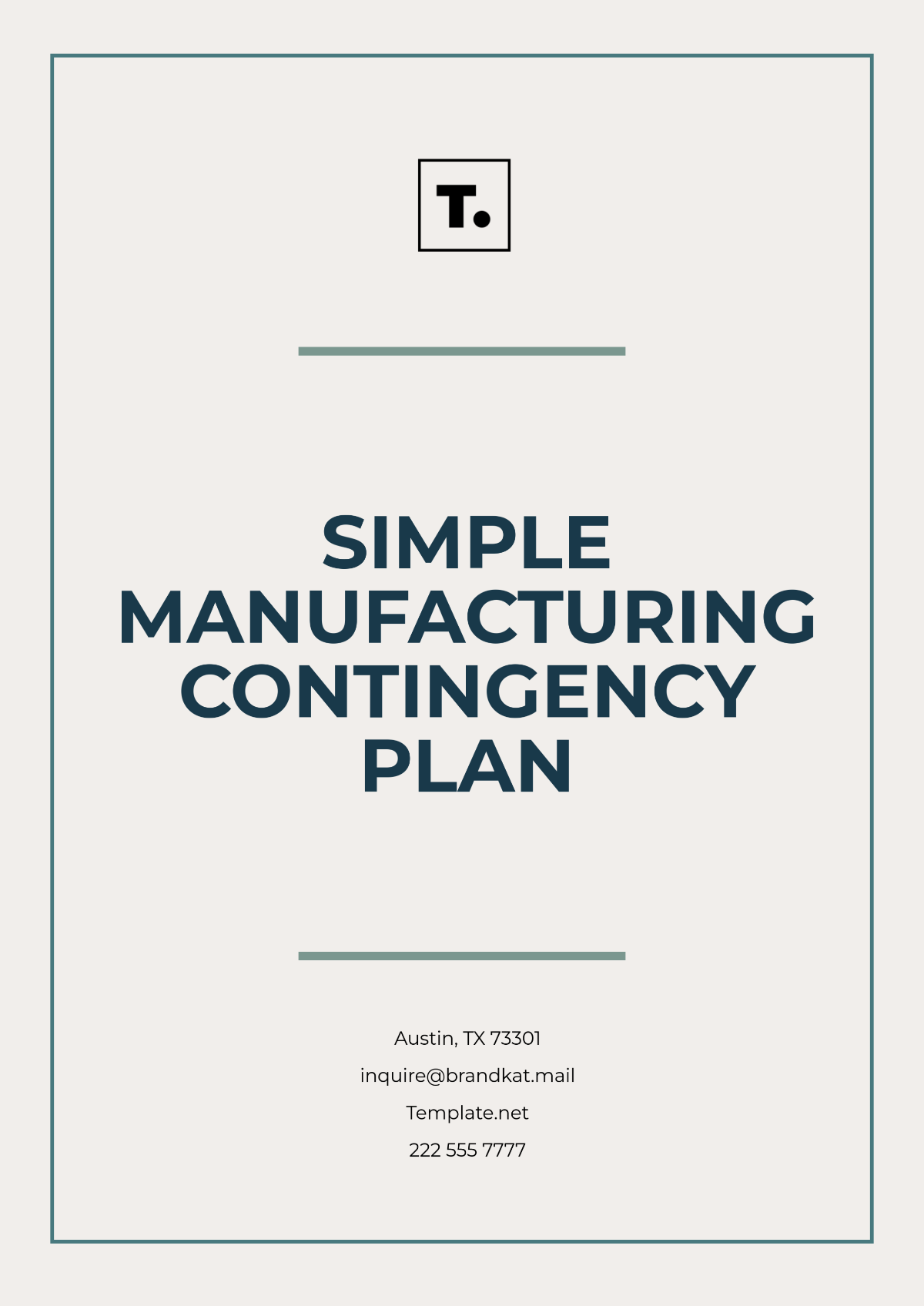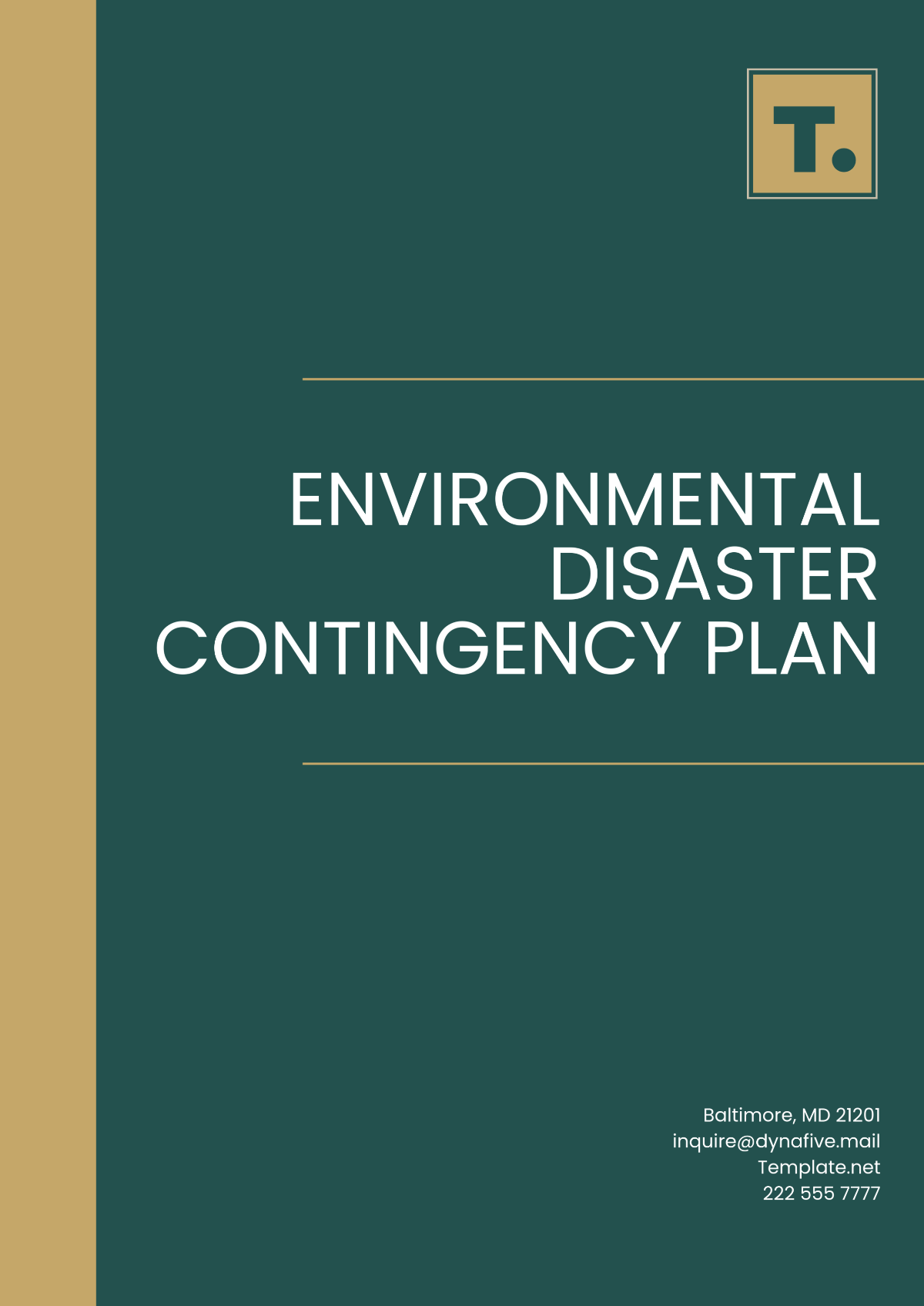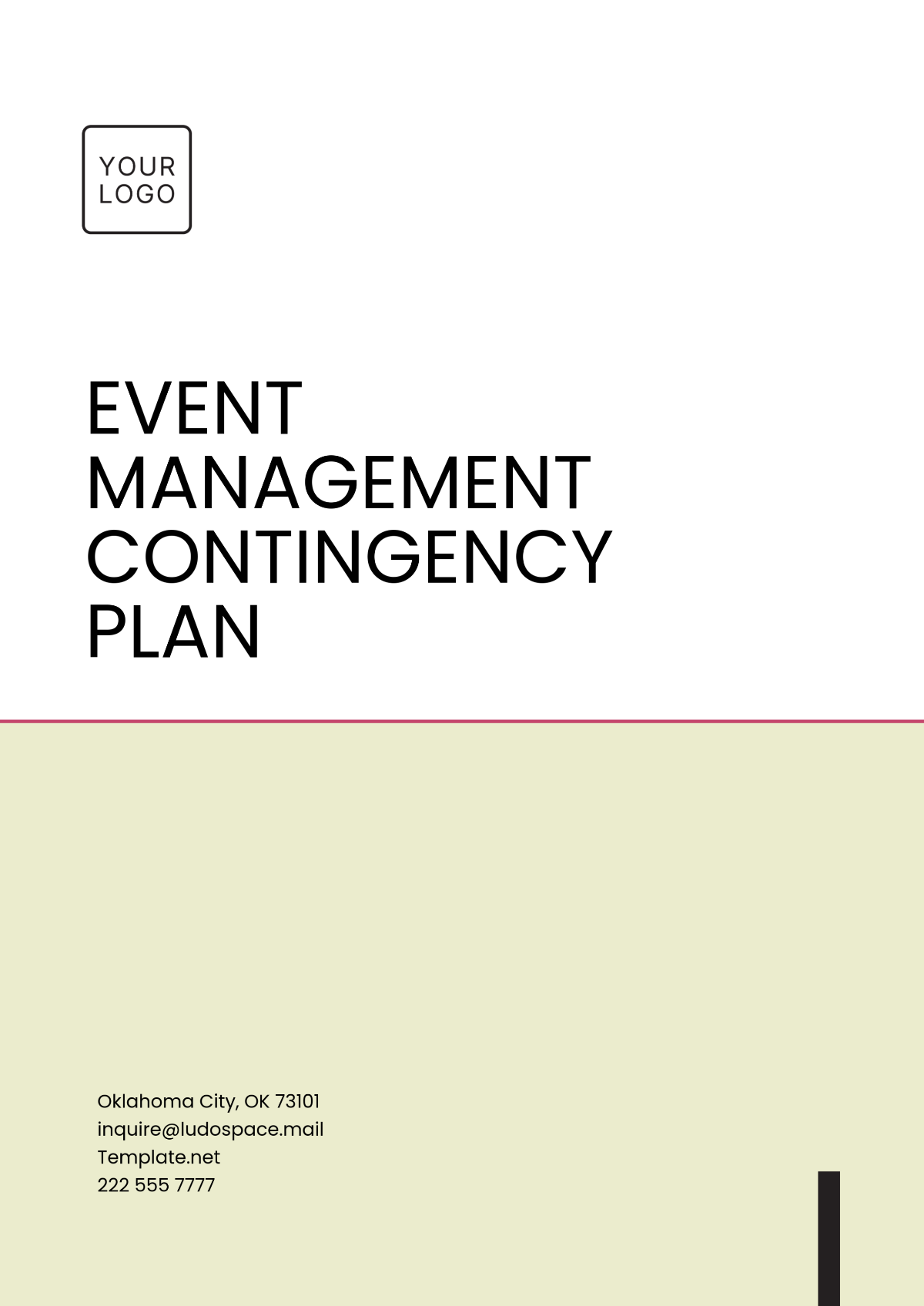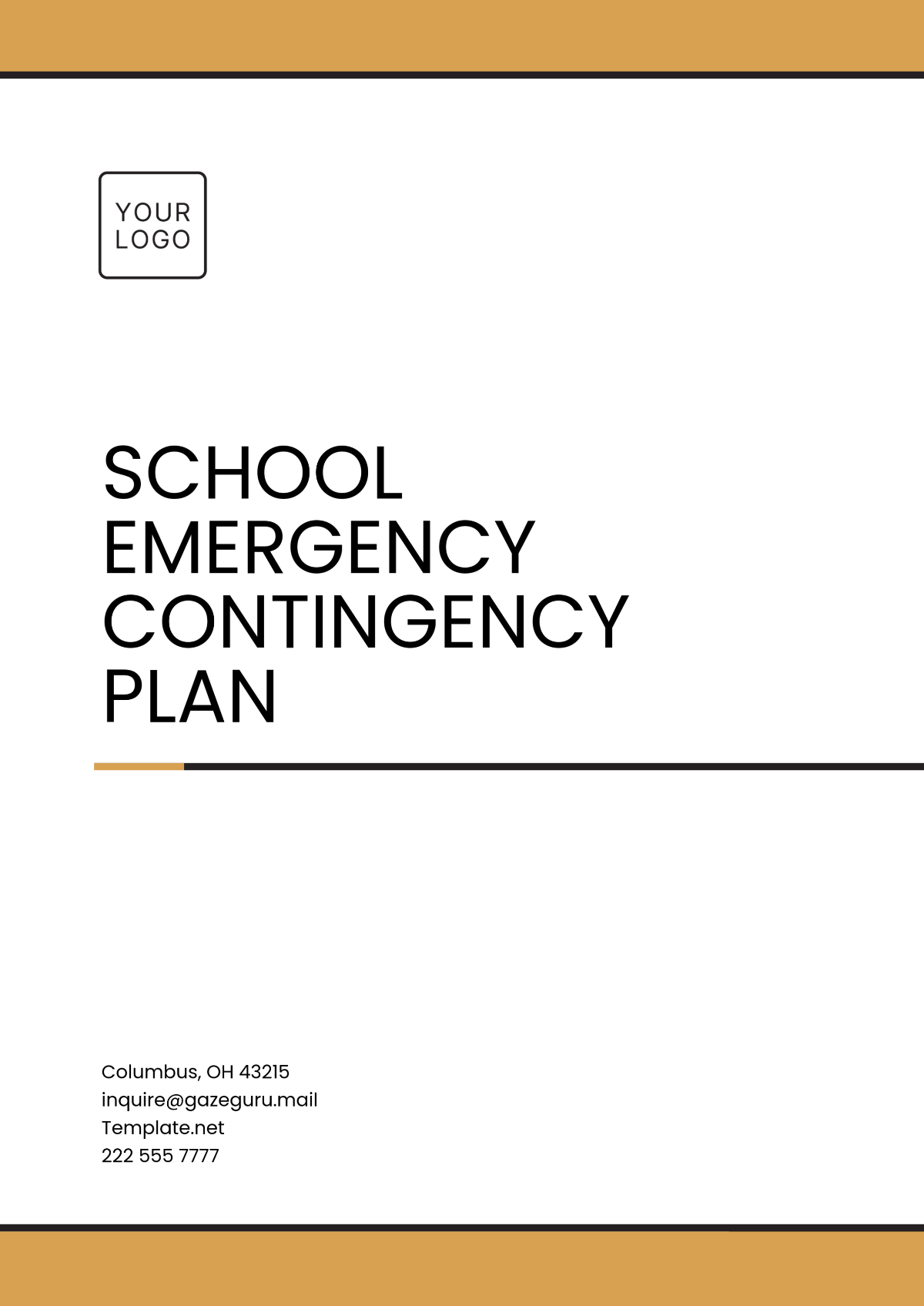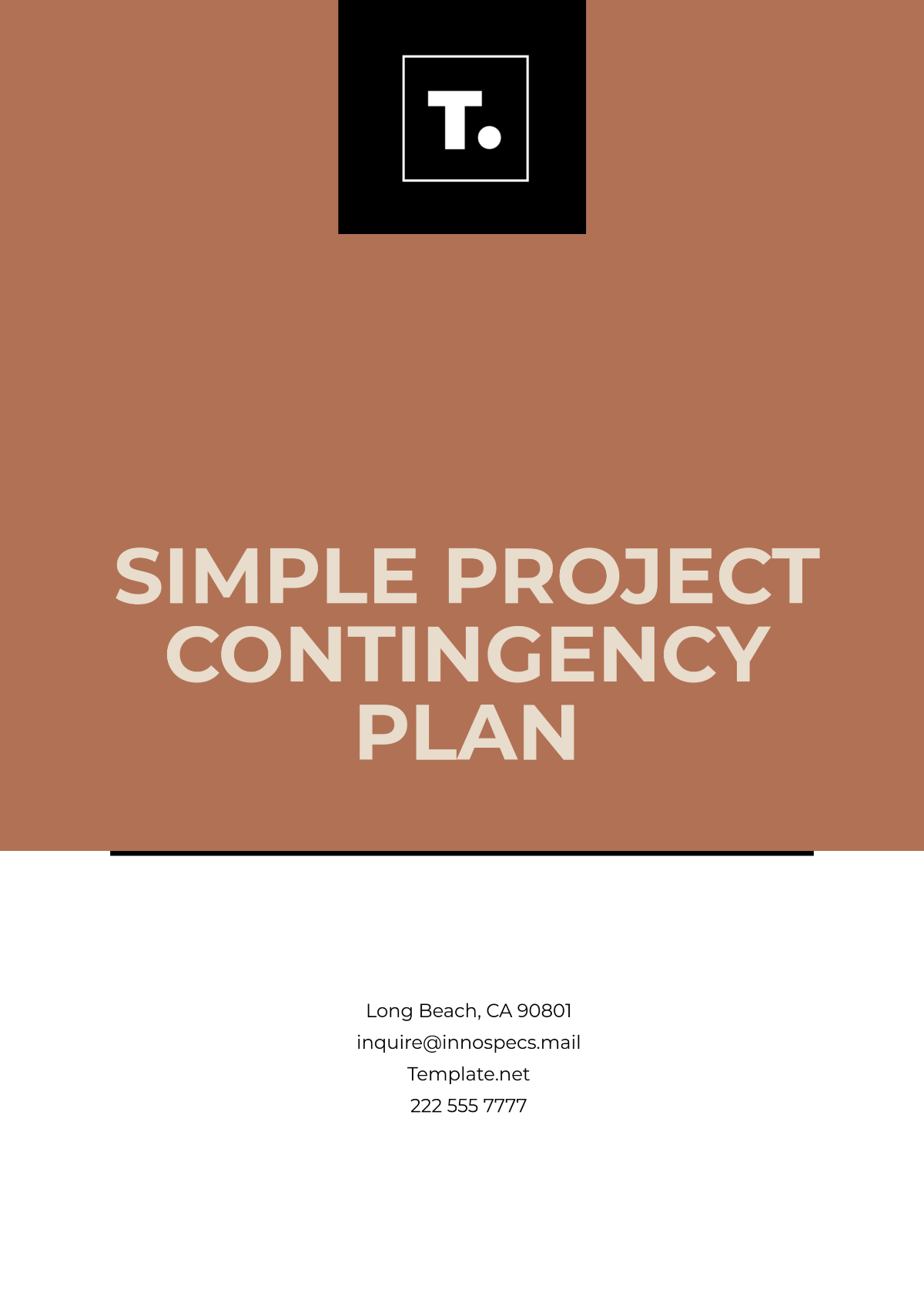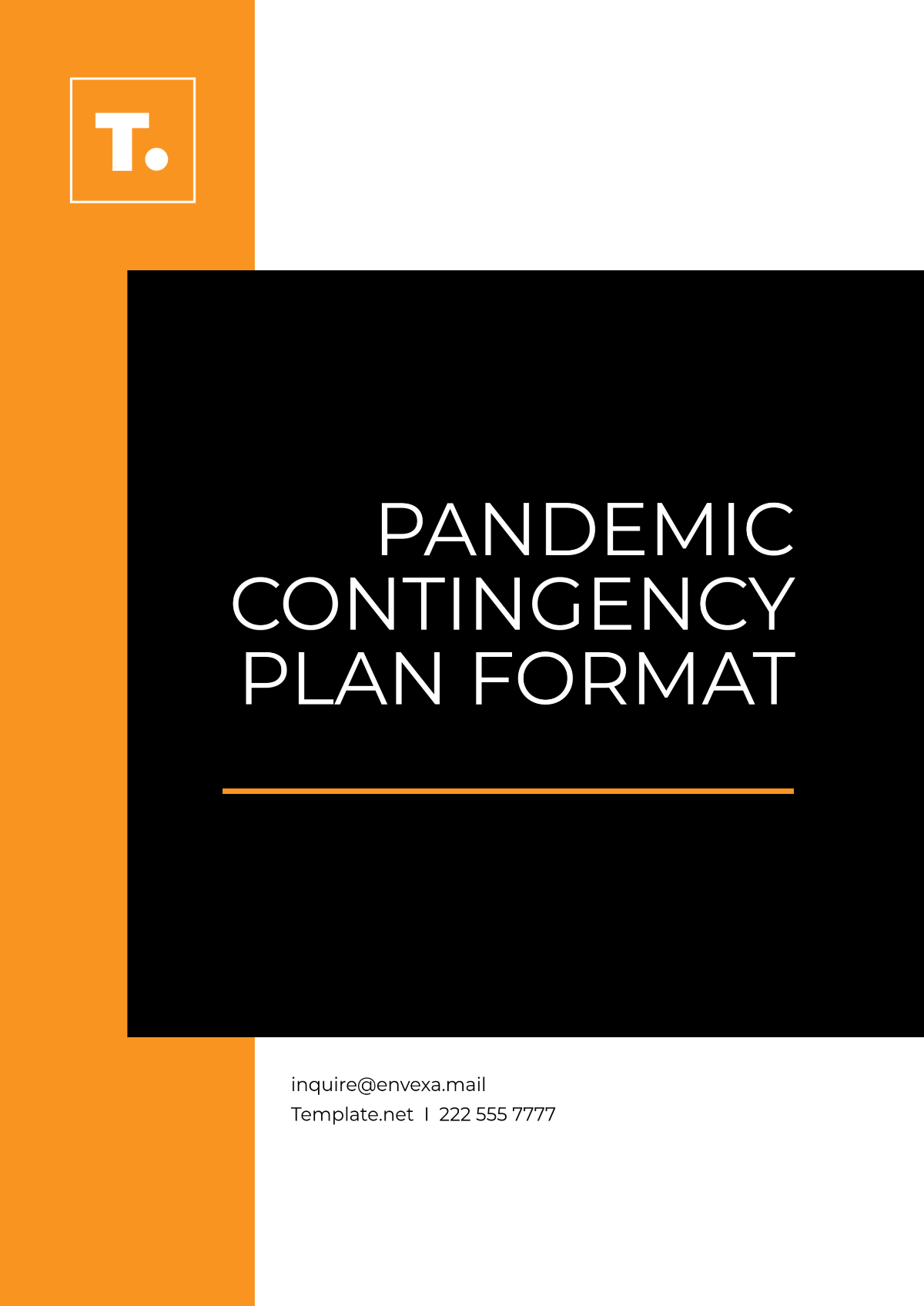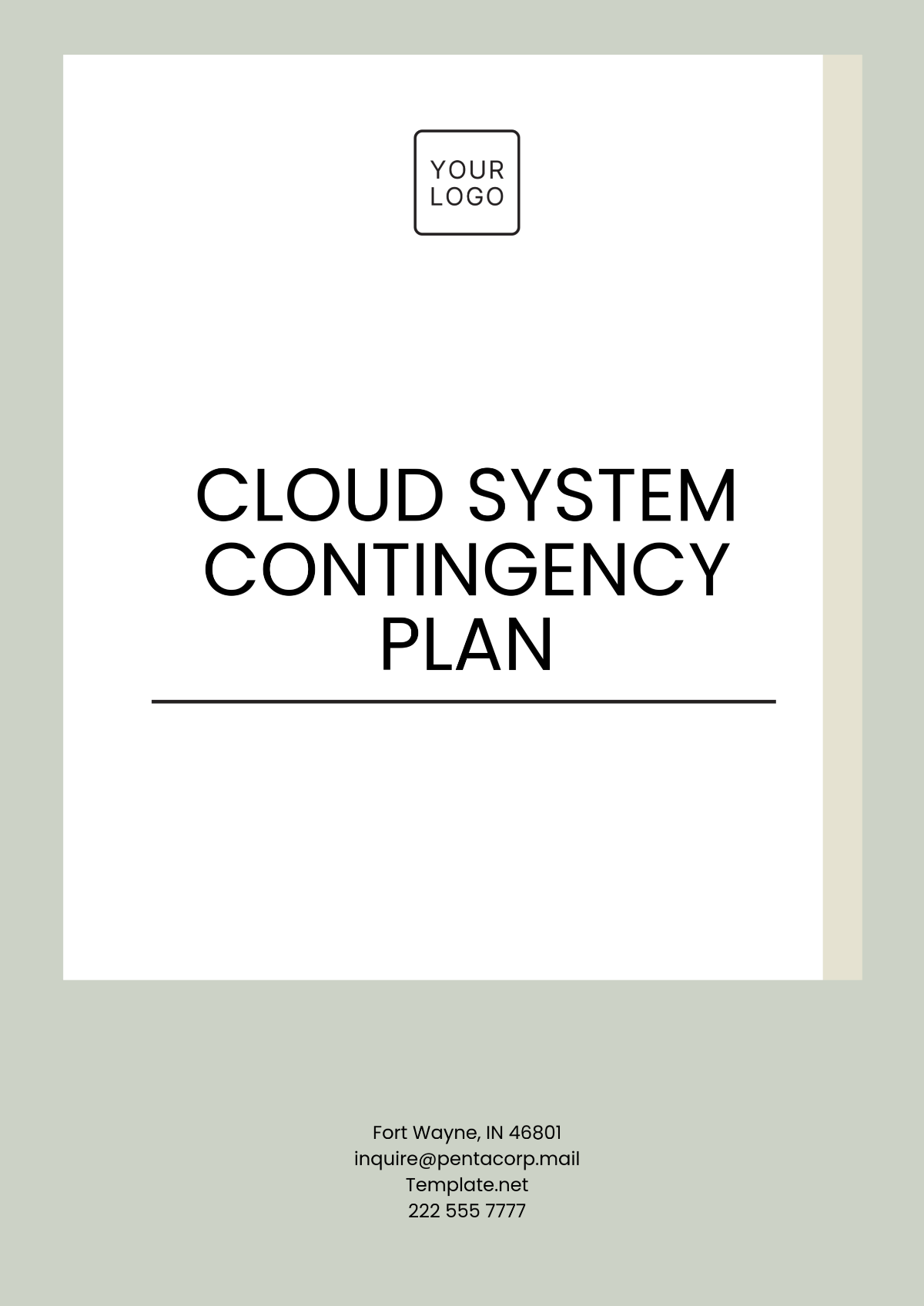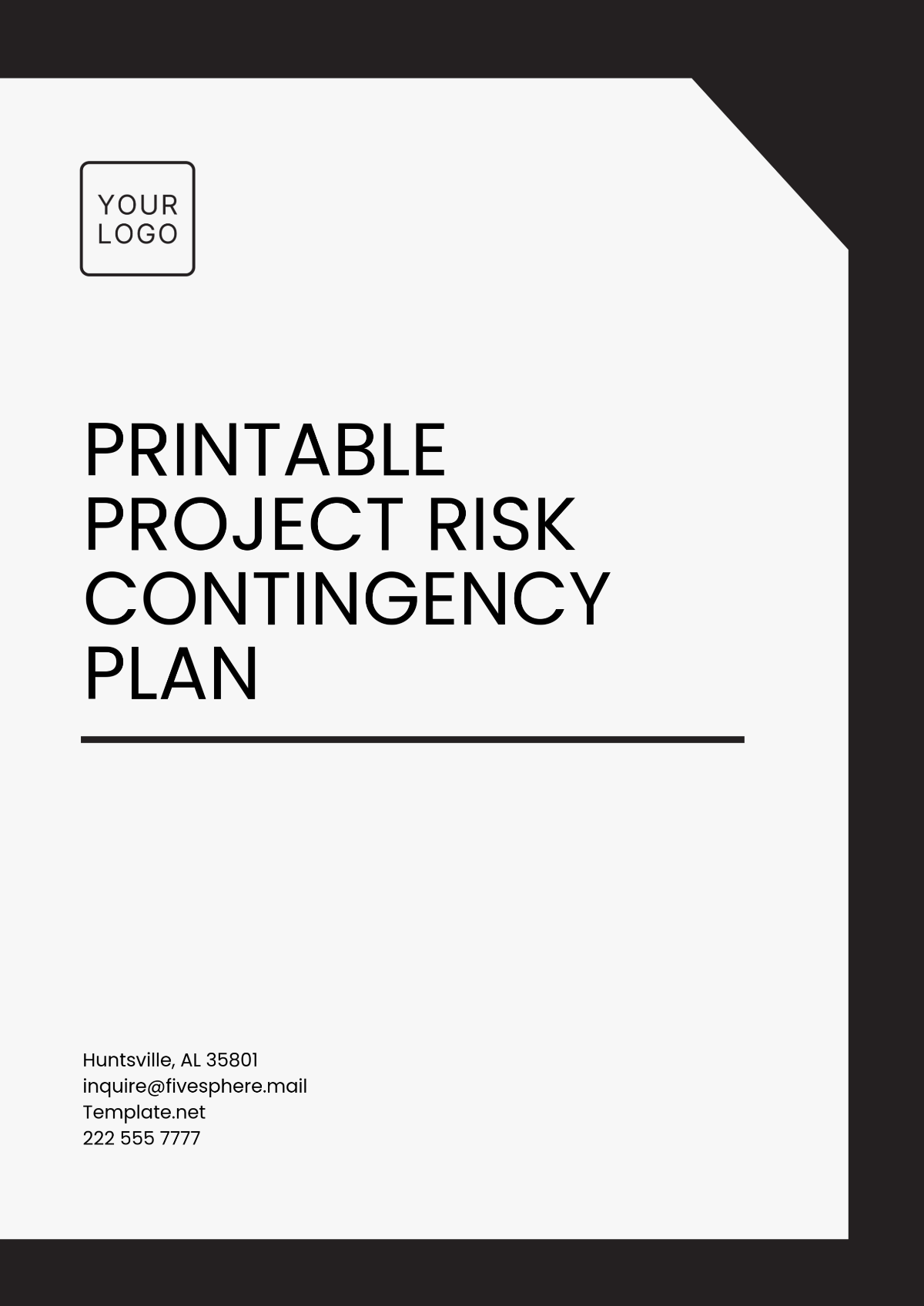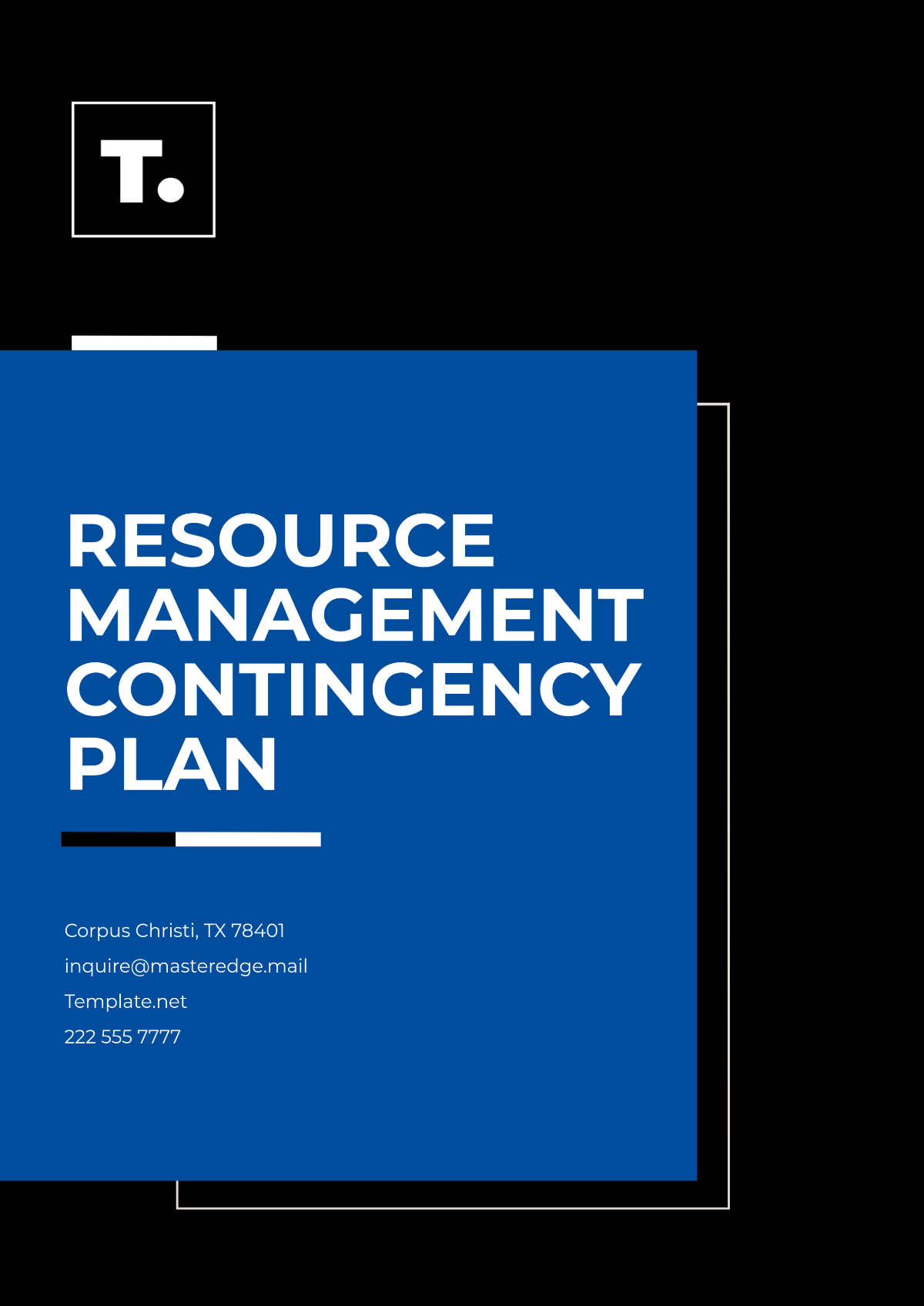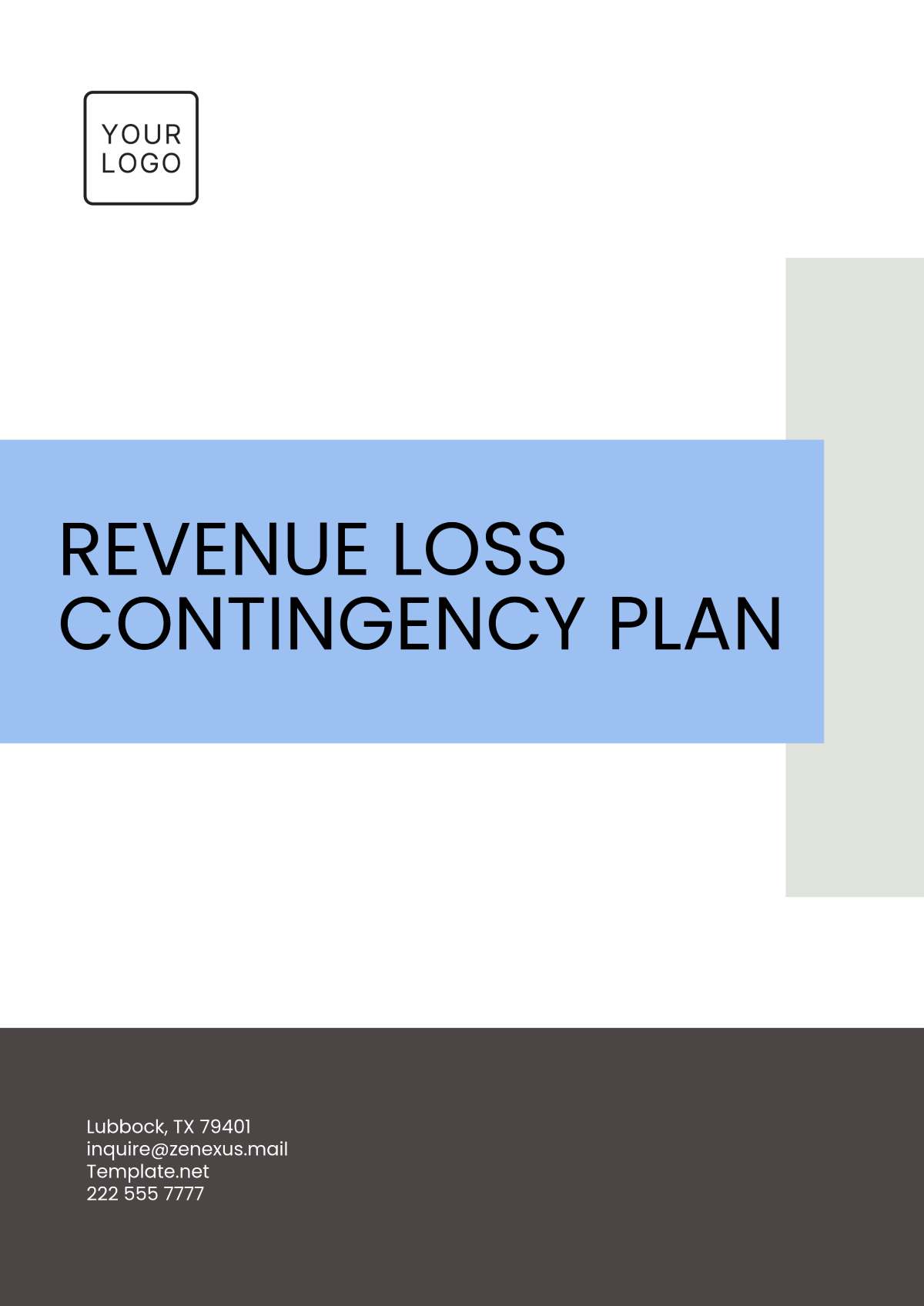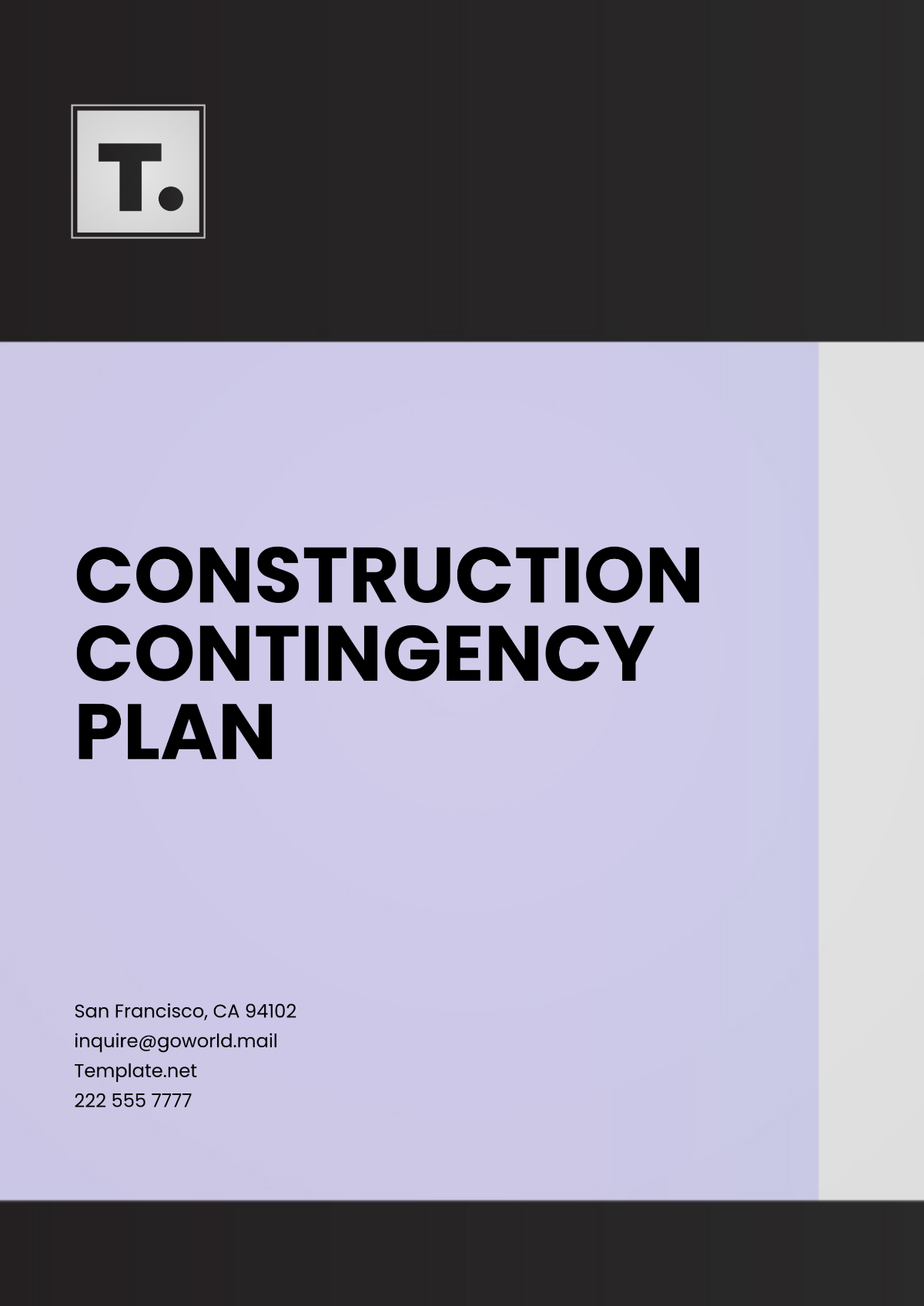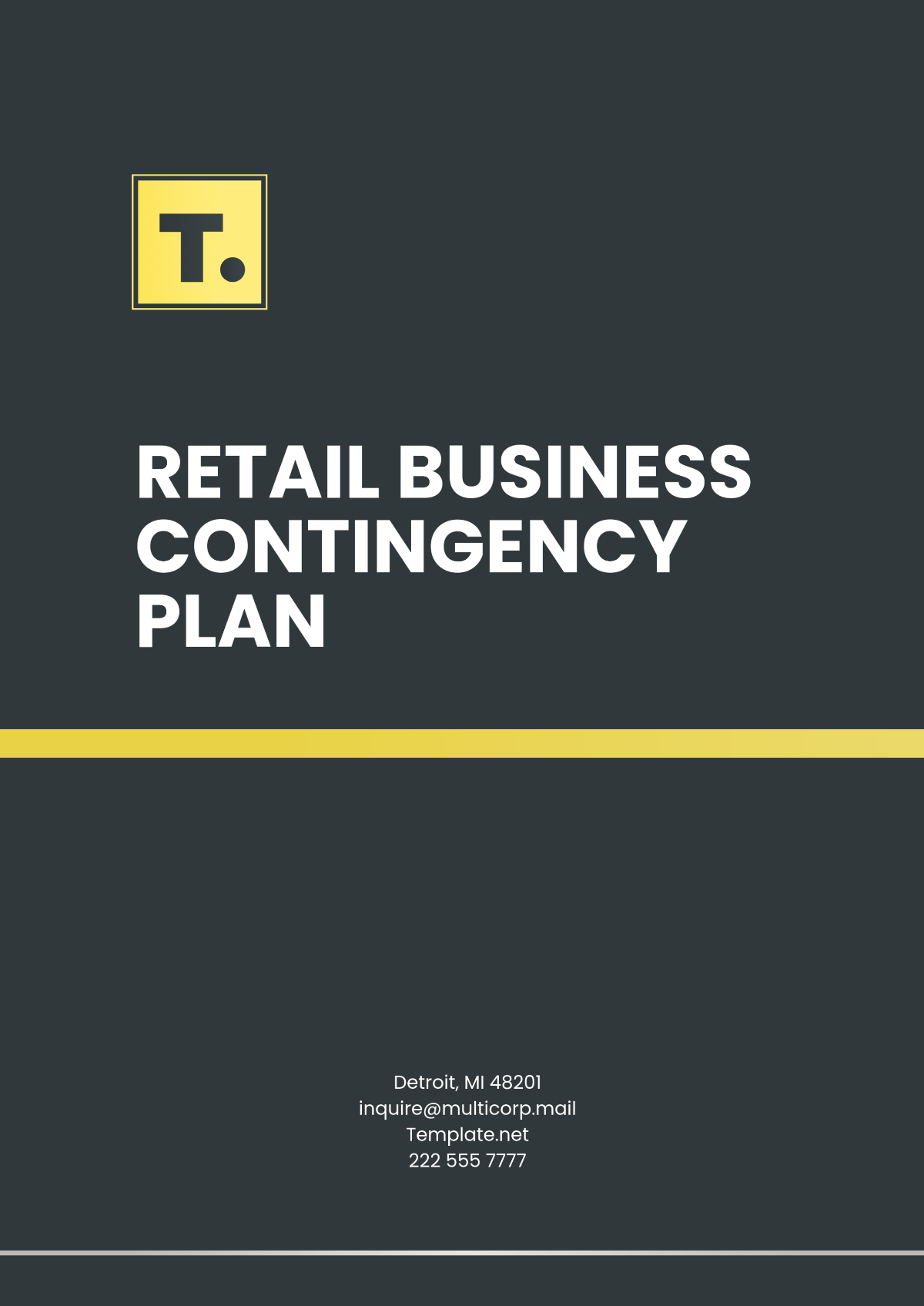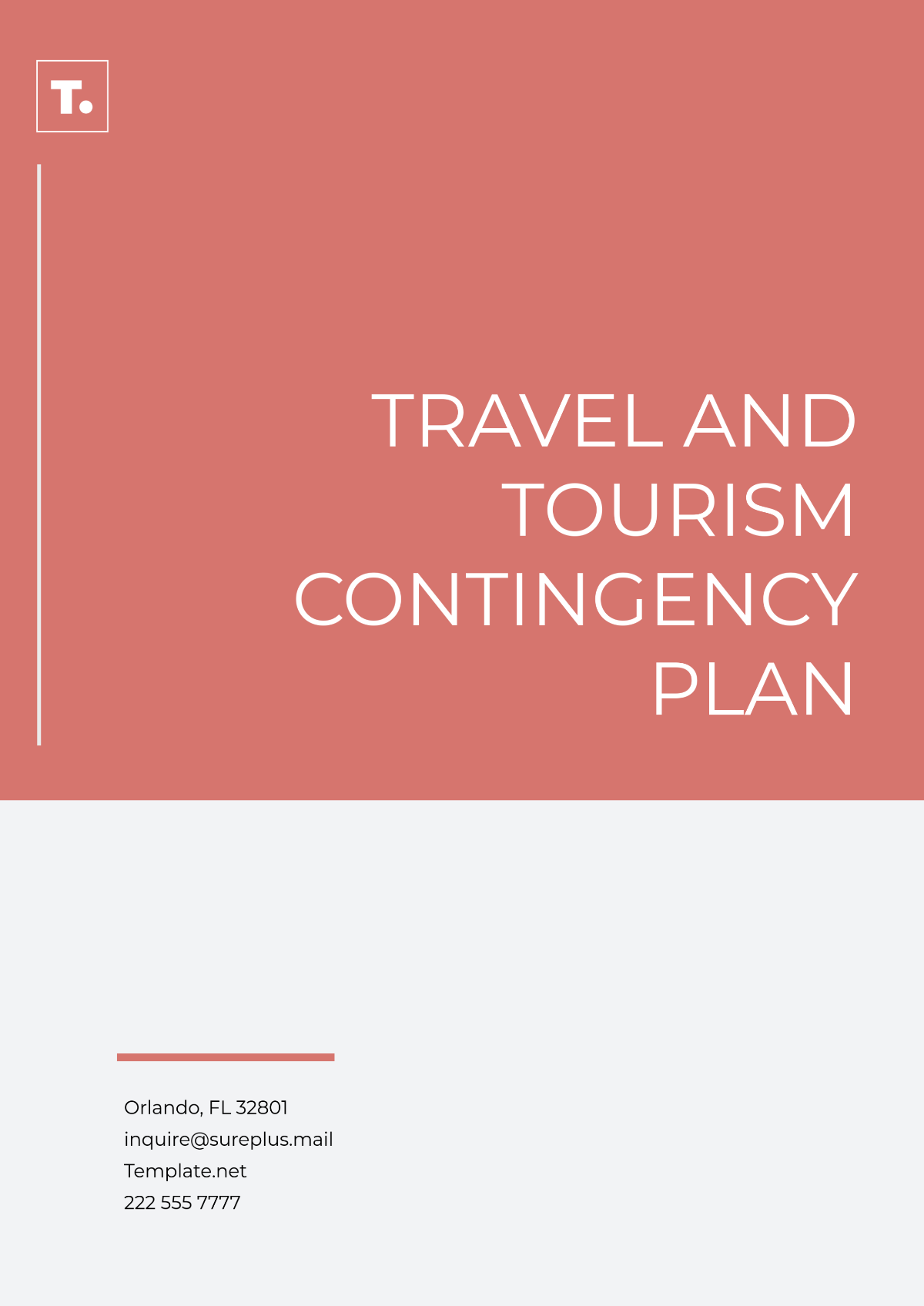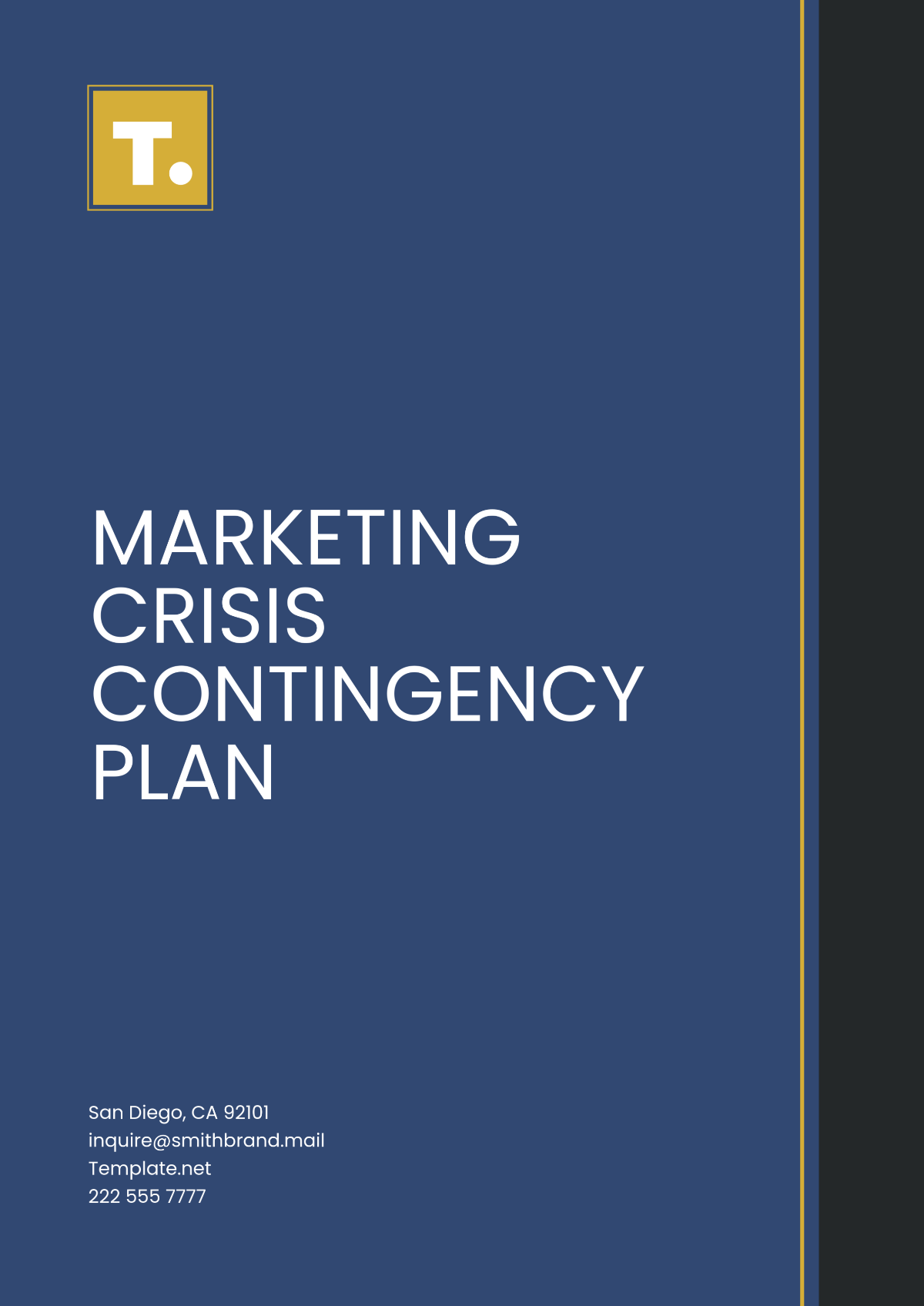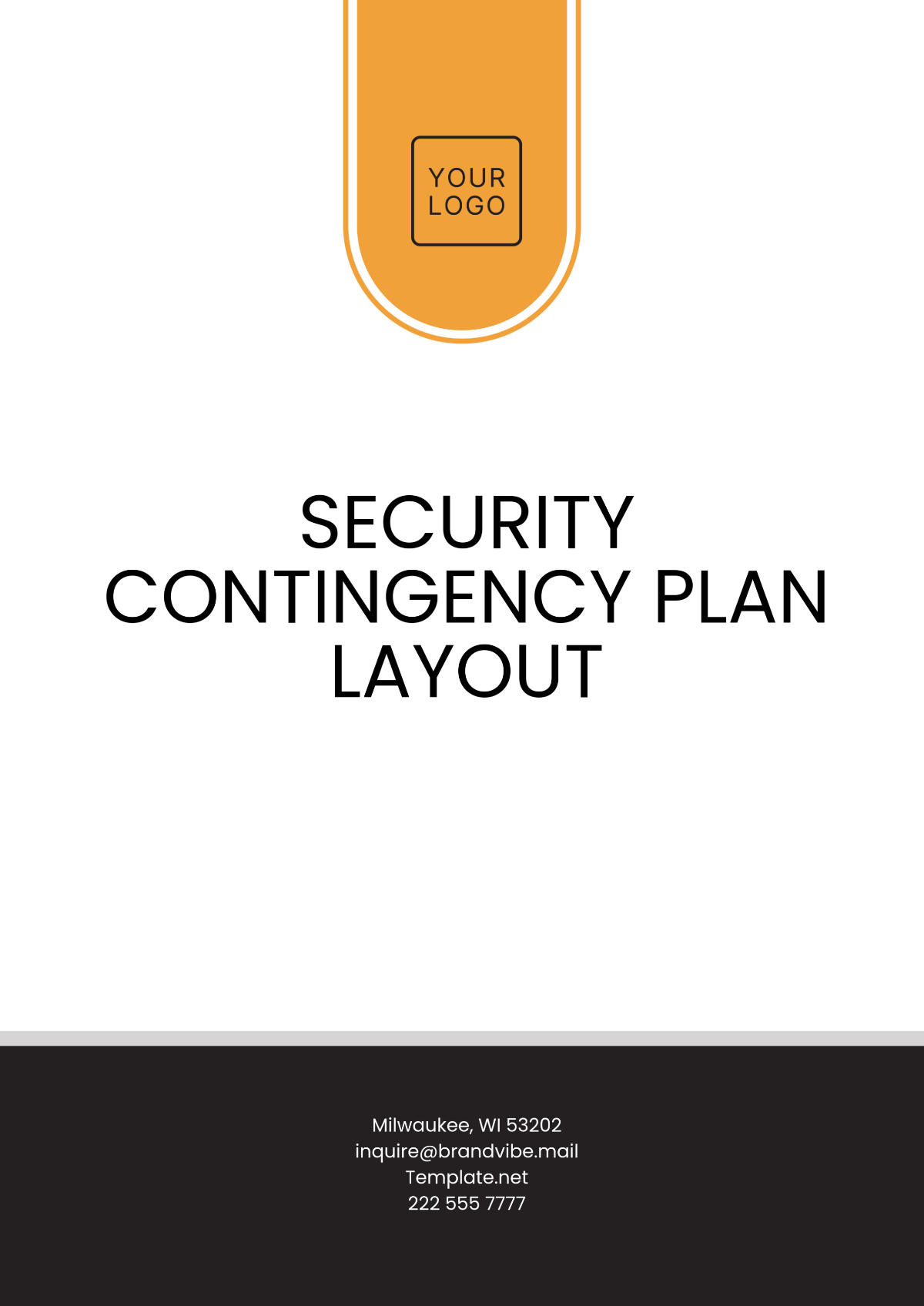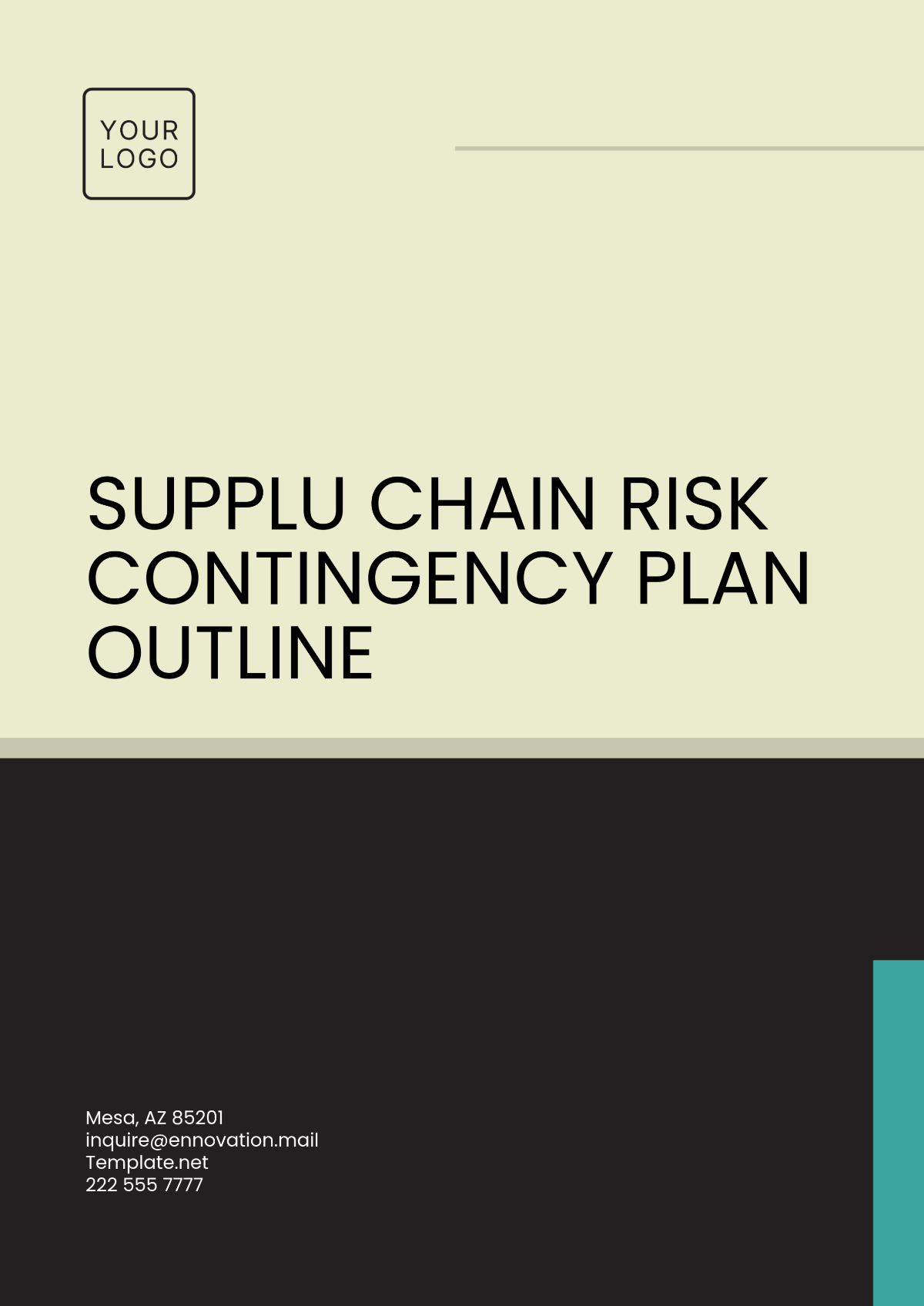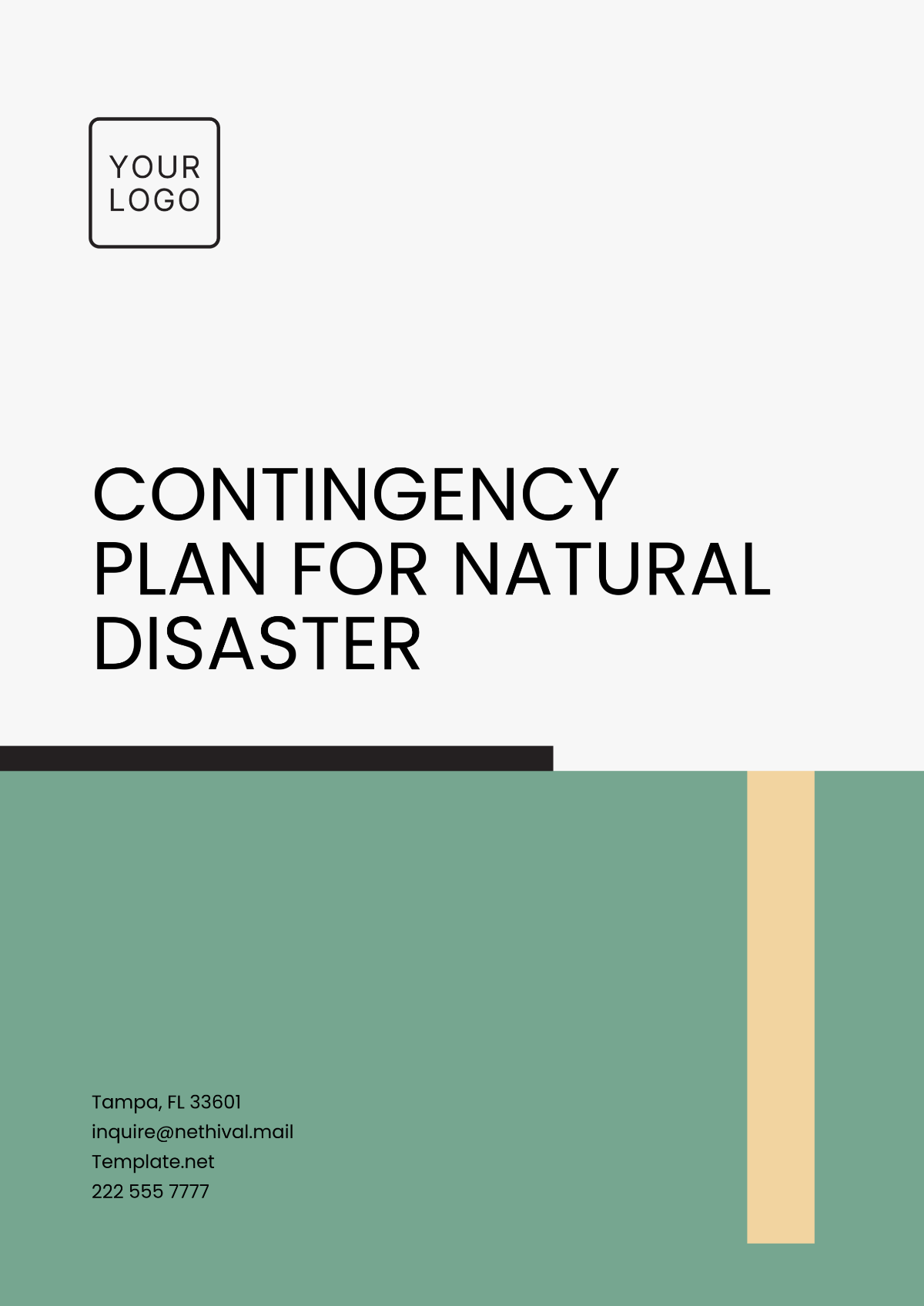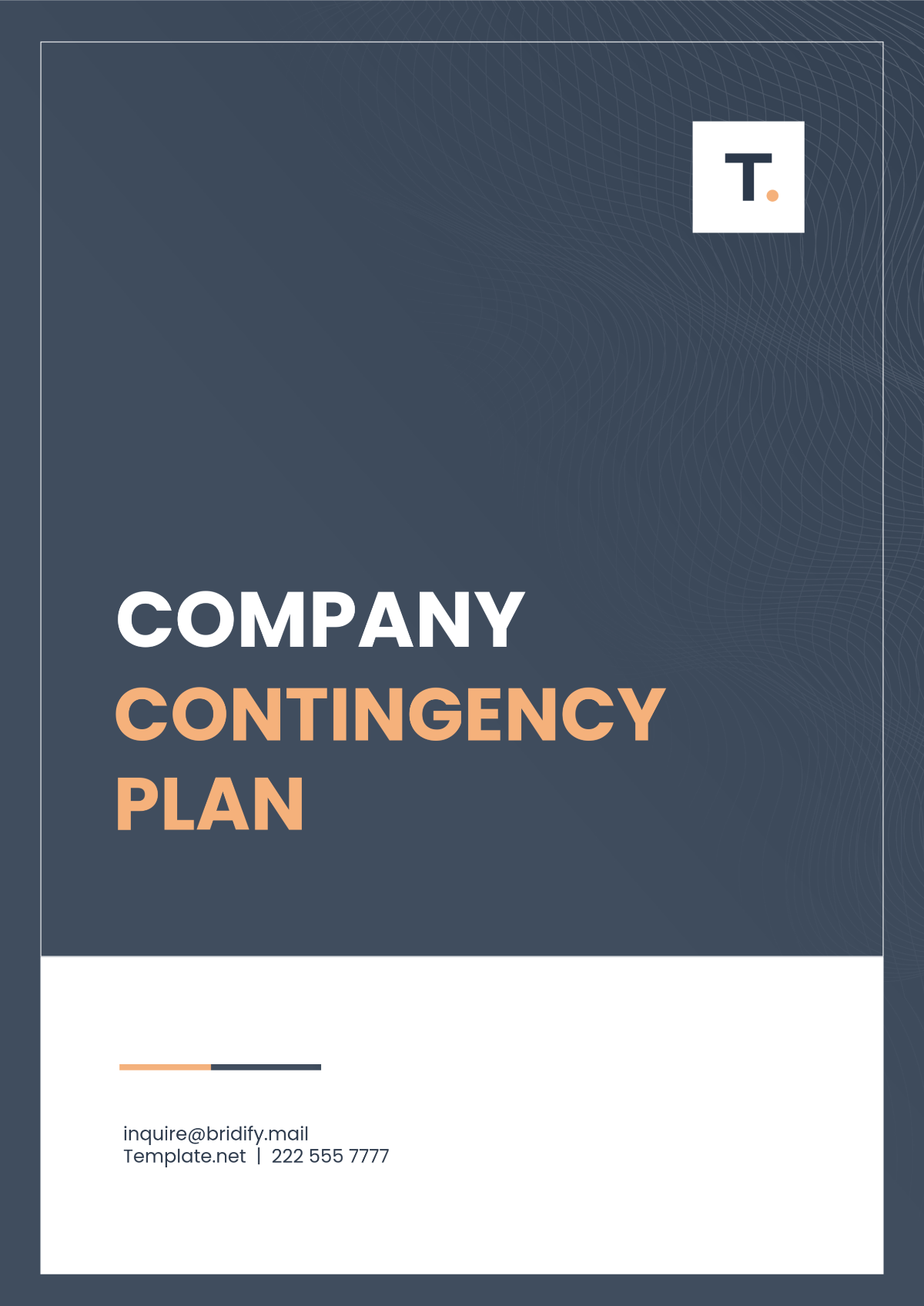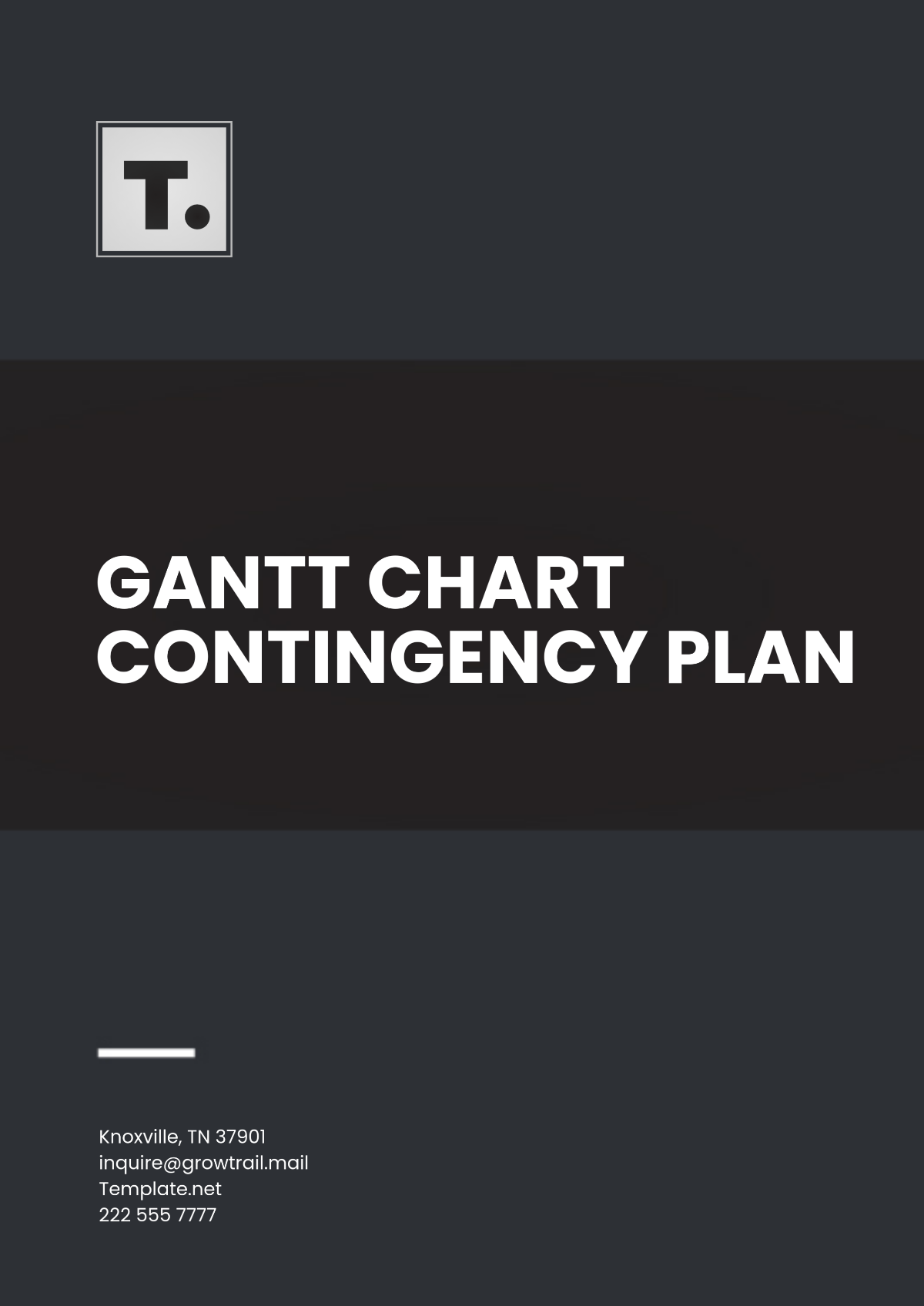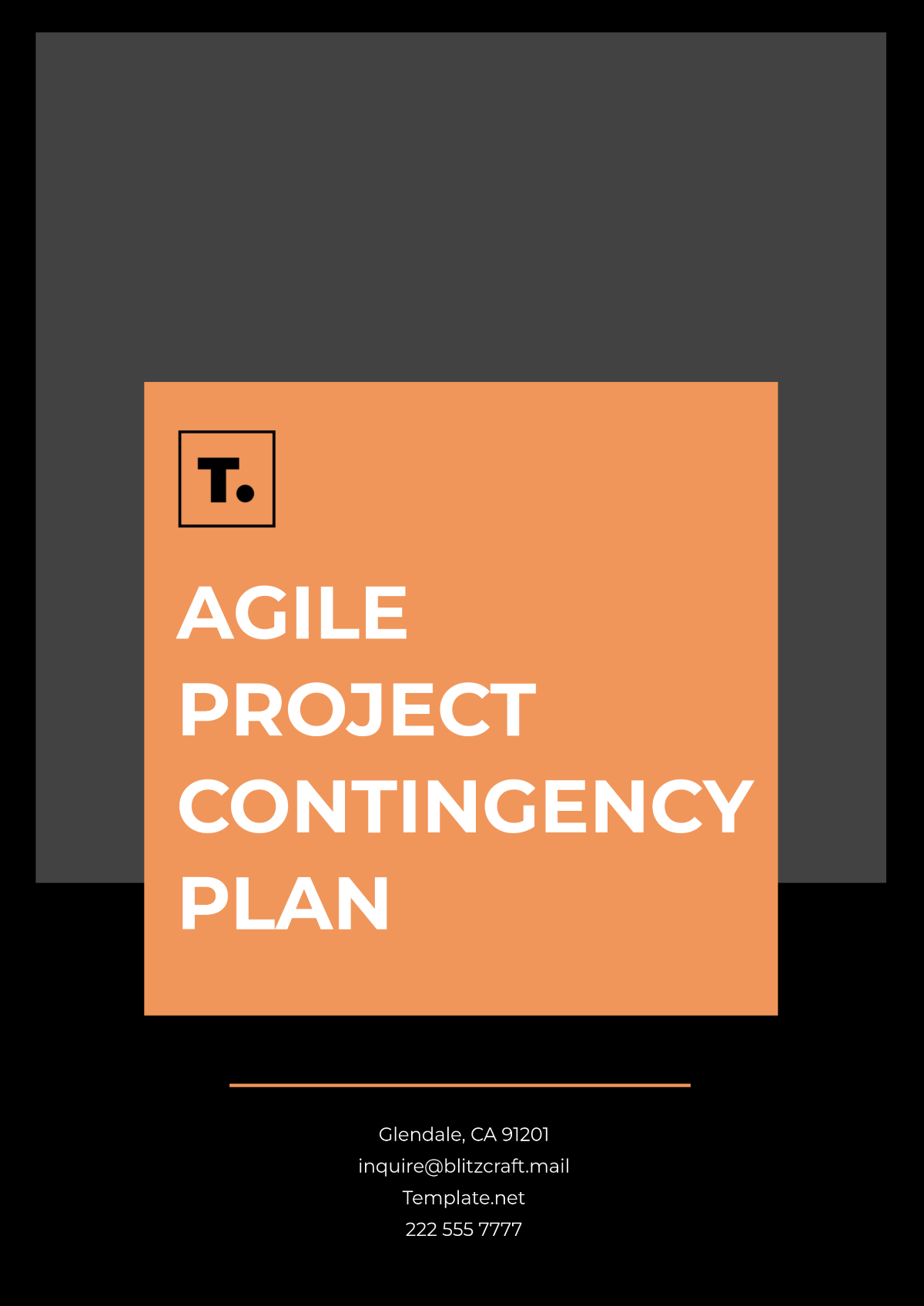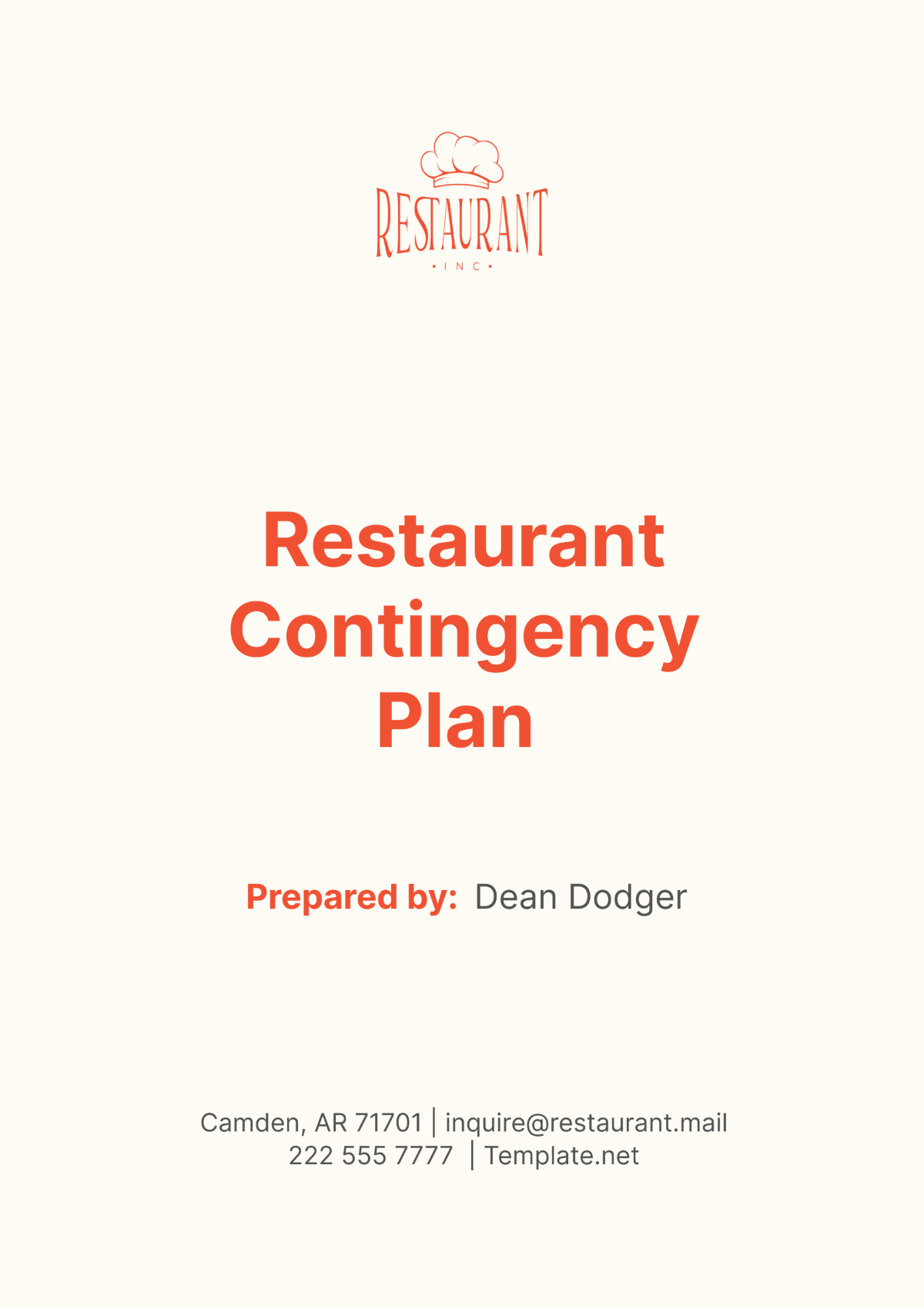Simple Project Contingency Plan
I. Introduction
A Project Contingency Plan is essential for managing risks and ensuring success amidst uncertainties. This document details [Your Company Name]'s strategies for addressing unexpected challenges from 2050 to 2060, crucial for maintaining project stability in a dynamic business environment. It includes risk assessments, mitigation strategies, budgeting, roles, and communication tactics to guide the team through unforeseen issues and achieve project objectives.
II. Purpose of the Contingency Plan
The primary purpose of the Project Contingency Plan is to prepare [Your Company Name] for potential challenges and disruptions that may arise throughout the project lifecycle. The plan aims to:
Identify Potential Risks: By recognizing and categorizing possible risks, the plan enables proactive measures to prevent or minimize their impact.
Establish Response Strategies: This provides a framework for responding effectively to identified risks, ensuring that the project team can act swiftly and efficiently when issues arise.
Protect Project Objectives: The plan safeguards the project’s timeline, budget, and quality standards, ensuring that deliverables are achieved as planned.
Ensure Stakeholder Confidence: By demonstrating a comprehensive approach to risk management, the plan helps build confidence among stakeholders, including clients, investors, and team members.
The contingency plan is a proactive document that not only addresses potential risks but also outlines steps for recovery and continuity, ensuring that [Your Company Name] remains resilient and adaptable in the face of adversity.
III. Project Overview
The [Your Company Name] project, spanning from 2050 to 2060, involves the development of a groundbreaking technology platform designed to enhance digital services. This section provides an overview of the project's key phases, objectives, and scope.
A. Project Phases
Phase 1: Project Initiation and Planning (2050-2051)
Objectives: Establish project goals, scope, and requirements. Formulate a detailed project plan, including timelines, resource allocation, and budget estimates.
Activities: Conduct feasibility studies, engage stakeholders, and define project deliverables. Develop risk management and contingency plans.
Deliverables: Project charter, project management plan, and initial risk assessment.
Phase 2: Development and Implementation (2052-2054)
Objectives: Develop and implement the core technology infrastructure, ensuring that it meets the project’s requirements and specifications.
Activities: Design system architecture, develop software components, and integrate hardware and software systems. Conduct preliminary testing and quality assurance.
Deliverables: Prototype, system integration reports, and progress review documents.
Phase 3: Testing and Quality Assurance (2055-2057)
Objectives: Ensure that the technology platform meets all performance, security, and quality standards through rigorous testing and validation.
Activities: Perform system testing, user acceptance testing, and quality assurance reviews. Address any issues identified during testing.
Deliverables: Testing reports, quality assurance certificates, and final adjustments.
Phase 4: Full Deployment and Post-Launch Evaluation (2058-2060)
Objectives: Deploy the technology platform to the production environment and evaluate its performance post-launch.
Activities: Execute the deployment plan, conduct user training, and monitor system performance. Gather feedback and make necessary improvements.
Deliverables: Deployed system, user training materials, and post-launch performance reports.
The project is expected to deliver a technology platform that improves service efficiency by 40%, with a total budget of $50 million. Key milestones include the completion of the prototype by Q4 2053 and the full rollout by Q2 2058.
IV. Key Risks and Risk Assessment
A. Risk Identification
To effectively manage risks, it is essential to identify potential threats that could impact the project. The following risks have been identified:
Technical Failures
Description: Potential issues with system design, software development, or infrastructure that could lead to delays or project failures.
Potential Impact: High – Technical failures could significantly impact project timelines, quality, and overall success.
Likelihood: Medium – Technical issues are common but can be managed with proper planning and resources.
Budget Overruns
Description: Unexpected expenses or mismanagement of funds leading to a budget exceeding the allocated $50 million.
Potential Impact: High–budget overruns can jeopardize the project's financial stability and success.
Likelihood: High–budget overruns are a common risk in large-scale projects, requiring careful monitoring and management.
Regulatory Changes
Description: Changes in government regulations or industry standards that could affect project requirements or compliance.
Potential Impact: Medium – Regulatory changes could lead to design alterations or compliance issues.
Likelihood: Low – Regulatory changes are less frequent but can have significant impacts if they occur.
Resource Availability
Description: Unavailability of key personnel or resources necessary for project execution.
Potential Impact: Medium – Resource shortages can cause delays and impact project progress.
Likelihood: Medium – Resource availability can fluctuate, requiring contingency planning for personnel and materials.
Supply Chain Disruptions
Description: Delays or disruptions in the supply chain affecting the procurement of materials or components.
Potential Impact: Medium – Supply chain issues can lead to delays in project milestones and increased costs.
Likelihood: High – Supply chain disruptions are a common risk, especially in global projects.
Natural Disasters
Description: Events such as earthquakes, floods, or severe weather impacting project operations and facilities.
Potential Impact: High – Natural disasters can cause significant disruptions to project activities and infrastructure.
Likelihood: Low – Natural disasters are infrequent but can have severe consequences when they occur.
B. Risk Assessment Table
The following table summarizes the likelihood and impact of each identified risk, providing a risk level assessment:
Risk | Likelihood | Impact | Risk Level |
|---|---|---|---|
Technical Failures | Medium | High | High |
Budget Overruns | High | High | High |
Regulatory Changes | Low | Medium | Medium |
Resource Availability | Medium | Medium | Medium |
Supply Chain Disruptions | High | Medium | High |
Natural Disasters | Low | High | Medium |
V. Risk Mitigation Strategies
Effective risk mitigation strategies are essential to minimize the impact of potential risks. The following strategies will be implemented for each identified risk:
A. Technical Failures
Preventive Actions:
System Audits: Conduct regular system audits to identify potential technical issues early. These audits will include code reviews, system architecture assessments, and performance evaluations.
Quality Assurance (QA): Implement a rigorous QA process involving continuous testing and validation throughout the development lifecycle. A dedicated QA team will ensure that all components meet the required standards before integration.
Contingency Response:
Emergency Fixes: In the event of a technical failure, the QA team will deploy emergency fixes to address critical issues promptly. A rapid response team will be available to troubleshoot and resolve technical problems.
Backup Systems: Utilize backup servers and cloud-based solutions to ensure that project data and functionality are preserved and can be quickly restored if needed.
B. Budget Overruns
Preventive Actions:
Budget Tracking: Implement a real-time budget tracking system to monitor expenses and identify any deviations from the planned budget. Regular financial reviews will be conducted to ensure alignment with the budget.
Contingency Fund: Allocate a contingency fund of 15% of the total budget to cover unexpected costs. This fund will be reserved specifically for addressing unforeseen expenses.
Contingency Response:
Prioritization: If budget overruns occur, prioritize critical project activities and defer non-essential tasks. Adjust the project scope as needed to stay within the revised budget.
Additional Funding: If necessary, seek additional funding from stakeholders or investors to cover any budget shortfalls and ensure project continuity.
C. Regulatory Changes
Preventive Actions:
Regulatory Monitoring: The legal and compliance teams will continuously monitor legislative developments and industry regulations. Regular updates and compliance audits will be conducted to ensure that the project adheres to current regulations.
Compliance Reviews: Conduct periodic compliance reviews to identify any potential regulatory issues early and implement necessary changes to maintain adherence.
Contingency Response:
Adjustments: If regulatory changes occur, the project team will work with legal experts to assess the impact and make necessary adjustments to the project scope and requirements.
Stakeholder Communication: Communicate any changes and their implications to stakeholders promptly to ensure transparency and manage expectations.
D. Resource Availability
Preventive Actions:
Personnel Backup: Develop a personnel backup plan to address potential resource shortages. Cross-train team members to handle critical roles and responsibilities.
Resource Planning: Create a comprehensive resource plan that includes detailed forecasts of required personnel and materials. Establish relationships with multiple suppliers to ensure availability.
Contingency Response:
Temporary Resources: Engage temporary or contract personnel to fill gaps in critical roles. Collaborate with staffing agencies to quickly source qualified individuals as needed.
Resource Reallocation: Reallocate resources from less critical areas to address urgent project needs and maintain progress.
E. Supply Chain Disruptions
Preventive Actions:
Supplier Management: Develop strong relationships with multiple suppliers and establish alternative sourcing options. Regularly review supplier performance and reliability.
Inventory Management: Maintain safety stock levels for critical components to mitigate the impact of supply chain disruptions. Implement inventory tracking systems to monitor stock levels.
Contingency Response:
Alternate Suppliers: If a disruption occurs, activate agreements with alternate suppliers to ensure the timely delivery of materials. Negotiate expedited shipping options if necessary.
Adjust Timelines: Adjust project timelines to accommodate delays in material procurement and update stakeholders on any changes to the project schedule.
F. Natural Disasters
Preventive Actions:
Disaster Preparedness: Develop and implement a disaster preparedness plan, including emergency response protocols and evacuation procedures. Conduct regular drills to ensure readiness.
Facility Protection: Invest in infrastructure improvements to protect facilities from natural disasters, such as flood barriers and earthquake-resistant structures.
Contingency Response:
Emergency Response: Activate the emergency response plan in the event of a natural disaster. Ensure the safety of personnel and secure project assets.
Recovery Plan: Implement a recovery plan to restore project operations as quickly as possible. Coordinate with insurance providers to address any damage or losses.
VI. Contingency Budgeting
Contingency budgeting is a crucial aspect of risk management, ensuring that adequate financial resources are available to address unexpected events. The following details outline the contingency budget allocation for the [Your Company Name] project.
A. Contingency Budget Allocation
The total project budget is $50 million, with a contingency fund of 15% allocated for managing unforeseen expenses. The contingency budget is structured as follows:
Contingency Fund Amount: $7.5 million
Allocation Breakdown:
Technical Failures: $2 million
Budget Overruns: $2.5 million
Regulatory Changes: $1 million
Resource Availability: $1 million
Supply Chain Disruptions: $1 million
Natural Disasters: $1 million
B. Financial Management
Monitoring and Reporting: Regularly monitor contingency expenditures and report on the utilization of the contingency fund. Adjust allocations as needed based on emerging risks and project requirements.
Approval Process: Implement an approval process for accessing contingency funds, ensuring that expenditures are justified and aligned with the project's needs.
Replenishment: If significant portions of the contingency fund are utilized, assess the need for replenishment and seek additional funding if necessary.
C. Contingency Fund Utilization Table
The following table summarizes the planned utilization of the contingency fund:
Risk Category | Planned Allocation | Utilized Amount | Remaining Balance |
|---|---|---|---|
Technical Failures | $2 million | TBD | TBD |
Budget Overruns | $2.5 million | TBD | TBD |
Regulatory Changes | $1 million | TBD | TBD |
Resource Availability | $1 million | TBD | TBD |
Supply Chain Disruptions | $1 million | TBD | TBD |
Natural Disasters | $1 million | TBD | TBD |
VII. Roles and Responsibilities
Clearly defined roles and responsibilities are essential for effective risk management and contingency planning. The following outlines the key roles involved in managing the Project Contingency Plan:
A. Project Manager
Responsibilities:
Oversee Implementation: Manage the execution of the contingency plan, ensuring that all actions are taken as planned.
Coordinate Resources: Allocate resources effectively to address identified risks and manage contingency expenditures.
Communicate with Stakeholders: Provide regular updates to stakeholders on contingency actions, risk status, and project progress.
B. Risk Management Team
Responsibilities:
Risk Assessment: Conduct ongoing risk assessments and update the risk register as needed.
Mitigation Strategies: Develop and implement risk mitigation strategies, working closely with the project team.
Monitoring and Reporting: Monitor risk indicators and report on the effectiveness of mitigation efforts.
C. Financial Controller
Responsibilities:
Budget Management: Oversee budget tracking, contingency fund allocation, and financial reporting.
Approval Process: Review and approve expenditures related to contingency actions, ensuring alignment with the budget.
Financial Reporting: Provide regular financial reports on the utilization of the contingency fund and overall project budget.
D. Communication Specialist
Responsibilities:
Stakeholder Communication: Develop and implement communication strategies for keeping stakeholders informed about risk management and contingency actions.
Report Preparation: Prepare detailed reports on contingency actions, financial impacts, and recovery timelines.
Crisis Communication: Manage communication during crisis events, ensuring timely and accurate information dissemination.
E. Technical Team
Responsibilities:
Technical Support: Provide technical expertise and support for addressing technical failures and issues.
System Maintenance: Perform regular maintenance and updates to prevent technical problems and ensure system stability.
Problem Resolution: Quickly address and resolve technical issues as they arise, coordinating with the Risk Management Team.
VIII. Communication Plan
Effective communication is crucial for managing risks and ensuring that all stakeholders are informed and engaged. The communication plan includes the following elements:
A. Internal Communication
Frequency: Regular internal meetings will be held every week to review risk status, mitigation actions, and contingency plan updates. Emergency meetings will be scheduled as needed during crisis events.
Channels: Communication channels will include email, project management software, and internal messaging systems. A centralized communication platform will be used to ensure consistent information dissemination.
B. External Communication
Stakeholder Reporting: Regular reports will be sent to stakeholders on a weekly basis during normal project operations and on a daily basis during a crisis event. Reports will include updates on contingency actions, financial impacts, and recovery timelines.
Public Relations: In the event of a major disruption, a public relations strategy will be implemented to manage external communication and maintain a positive public image. Press releases and media briefings will be conducted as needed.
C. Communication Plan Table
The following table outlines the communication plan for internal and external stakeholders:
Communication Type | Frequency | Audience | Format | Responsible Party |
|---|---|---|---|---|
Internal Meetings | Weekly | Project Team | Meeting | Project Manager |
Emergency Meetings | As needed | Project Team | Meeting | Project Manager |
Stakeholder Reports | Weekly | Stakeholders | Report | Communication Specialist |
Crisis Reports | Daily | Stakeholders | Report | Communication Specialist |
Public Relations | As needed | Public | Press Release | Communication Specialist |
IX. Conclusion
[Your Company Name]'s Project Contingency Plan ensures resilience from 2050 to 2060 by establishing a framework for risk management, financial stability, and stakeholder confidence. It includes risk assessments, mitigation strategies, and contingency budgeting for effective disruption management. Defined roles and communication protocols enable quick issue resolution, serving as a guide to keep the project on track despite challenges, and positioning [Your Company Name] for successful outcomes.
